
Richard Charles Rodgers was an American composer who worked primarily in musical theater. With 43 Broadway musicals and over 900 songs to his credit, Rodgers was one of the most well-known American composers of the 20th century, and his compositions had a significant influence on popular music.
This is a list of notable events in music that took place in the year 1936.
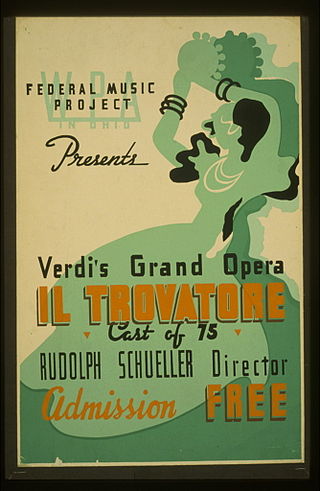
This is a list of notable events in music that took place in the year 1937.

Rodgers and Hammerstein was a theater-writing team of composer Richard Rodgers (1902–1979) and lyricist-dramatist Oscar Hammerstein II (1895–1960), who together created a series of innovative and influential American musicals. Their musical theater writing partnership has been called the greatest of the 20th century.
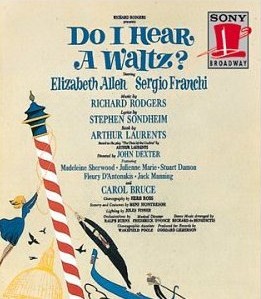
Do I Hear a Waltz? is a musical with a book by Arthur Laurents, music by Richard Rodgers, and lyrics by Stephen Sondheim. It was adapted from Laurents' 1952 play The Time of the Cuckoo, which was the basis for the 1955 film Summertime starring Katharine Hepburn.

Robert Russell Bennett was an American composer and arranger, best known for his orchestration of many well-known Broadway and Hollywood musicals by other composers such as Irving Berlin, George Gershwin, Jerome Kern, Cole Porter, and Richard Rodgers.

Steffi Duna was a Hungarian-born film actress.

Tortilla Flat (1935) is an early John Steinbeck novel set in Monterey, California. The novel was the author's first clear critical and commercial success.

Victor Varconi was a Hungarian actor who initially found success in his native country, as well as in Germany and Austria, in silent films, before relocating to the United States, where he continued to appear in films throughout the sound era. He also appeared in British and Italian films.

The Glass Slipper (1955) is an American musical film adaptation of the fairy tale Cinderella, made by MGM, directed by Charles Walters and produced by Edwin H. Knopf from a screenplay by Helen Deutsch. The music score is by Bronislau Kaper, the cinematography by Arthur E. Arling, the art direction by Daniel B. Cathcart and Cedric Gibbons and costume design by Walter Plunkett and Helen Rose.

Carry On Jack is a 1964 British comedy film, the eighth in the series of 31 Carry On films (1958–1992). Most of the usual Carry On team are missing from this film: only Kenneth Williams and Charles Hawtrey appear throughout, with Jim Dale making a cameo appearance as a sedan chair carrier. Bernard Cribbins makes the first of his three appearances in a Carry On. Juliet Mills, Donald Houston and Cecil Parker make their only Carry on appearances in this film. Carry On Jack was the second of the series to be filmed in colour and the first Carry On film with a historical setting and period costumes.
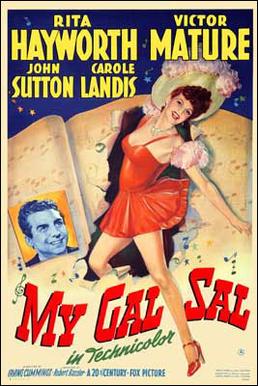
My Gal Sal is a 1942 American musical film distributed by 20th Century Fox and starring Rita Hayworth and Victor Mature. The film is a biopic of 1890s German-American composer / songwriter Paul Dresser and singer Sally Elliot. It was based on a biographical essay, sometimes erroneously referred to as a book, by Dresser's younger brother, novelist Theodore Dreiser. Some of the songs portrayed as Dresser's work were actually written by him, but several others were created in the 1890s style for the film by the Hollywood songwriting team of Ralph Rainger and Leo Robin.
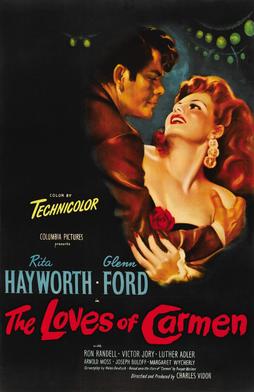
The Loves of Carmen is a 1948 American adventure drama romance film directed by Charles Vidor. The film stars Rita Hayworth as the gypsy Carmen and Glenn Ford as her doomed lover Don José.
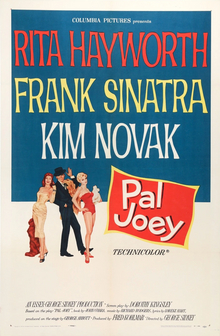
Pal Joey is a 1957 American musical comedy film directed by George Sidney, loosely adapted from the Rodgers and Hart musical play of the same name, and starring Rita Hayworth, Frank Sinatra, and Kim Novak.

The Hard Way is a 1943 Warner Bros. musical drama film starring Ida Lupino, Dennis Morgan, and Joan Leslie. Directed by Vincent Sherman, it is based on a story by Irwin Shaw which was reportedly based on Ginger Rogers' relationship with her first husband Jack Pepper and her mother Lela.

Pirate Latitudes is an action adventure novel by Michael Crichton, the sixteenth novel to be published under his own name and first to be published after his death, concerning 17th-century piracy in the Caribbean. HarperCollins published the book posthumously on November 26, 2009. The story stars the fictional privateer Captain Charles Hunter who, hired by Jamaica's governor Sir James Almont, plots to raid a Spanish galleon for its treasure.

Girl of the Rio is a 1932 American pre-Code RKO musical film starred Dolores del Río and Leo Carrillo. Directed by Herbert Brenon, the screenplay was written by Elizabeth Meehan and Louis Stevens, based on the play, The Dove by Willard Mack, which was itself based on a magazine article by Gerald Beaumont. The film is a remake of the 1927 silent film, The Dove, starring Norma Talmadge.

Pirates of Monterey is a 1947 American Technicolor western adventure film directed by Alfred L. Werker and starring Maria Montez, Rod Cameron and Gilbert Roland. It was the last film Montez made for Universal Pictures.

Criminals of the Air is a 1937 American action film, directed by Charles C. Coleman. It stars Rosalind Keith, Charles Quigley and Rita Hayworth. The film marked "Rita Hayworth"'s first onscreen credit; the actress, born Margarita Carmen Cansino, had previously used the stage name "Rita Cansino" or was uncredited in her prior 17 film appearances.


















